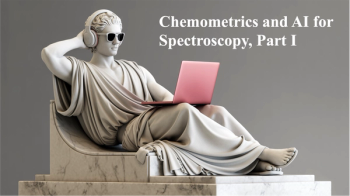
Evaluating Ceramide Nanoemulsions Using Raman Spectroscopy
Scientists from the Beijing Technology and Business University in Beijing, China recently evaluated the capabilities of ceramide nanoemulsions (NEs) using confocal Raman spectroscopy.
Scientists from the Beijing Technology and Business University in Beijing, China recently evaluated the capabilities of ceramide nanoemulsions (NEs) using confocal Raman spectroscopy. Their findings were published in the Journal of Raman Spectroscopy (1).
Ceramide NP (Cer-NP) is a type of ceramide that can be found in the skin and, like other ceramides, is important to maintain a healthy skin barrier and keep skin hydrated (2). The skin barrier is vital to human life, as it can protect from external threats like infections agents, chemicals, systemic toxicity, and allergens, while also maintaining homeostasis and protect from enhanced body water loss (3). Low skin permeability hinders ceramides’ efficacy.
There are different ways to evaluate drug permeability in cosmetics, one example being Franz diffusion cell, which is used to evaluate in vitro drug permeation with minimal tissue handling, no continuous sample collecting, and with a low amount of drug sample being needed for analysis (4). This method, however, has experimental limitations, which can make it difficult to quantify drug permeability in vivo on human skin.
For this experiment, the scientists tested out confocal Raman spectroscopy (CRM), which is regarded as versatile for tracking active molecule penetration through the skin (1). CRM normally consists of coupling a Raman spectrometer to a standard optical microscope, which allows for Raman analysis and high magnification visualization of a sample. Combined with a spatial filter, scientists can use CRM to filter samples’ analysis volumes in the lateral (XY) and depth (Z) axes (5). This process is non-invasive, non-destructive, real-time, and allows in vivo testing of ceramide permeability and efficacy (1).
The scientists aimed to study the skin penetration of Cer-NP nanoemulsions (NEs) into inner forearm skin, assessing short-term effects on stratum corneum (SC) thickness, hydration, and intercellular lipids (ICL) conformation order (1). This was done using water content and lateral packing order Slat = I2880/I2850, which were obtained by CRM data.
When Cer-NP penetrated the SC and epidermis, the amount of penetration lessened with depth and increased with duration before eventually retaining in the SC. The results of the study also uncovered Cer-NP-promoted SC hydration and increased both SC thickness and Slat. This research showed that Cer-NP NEs can successfully penetrate the skin and properly moisturize skin cells and restore barrier damage.
References
(1) Xu, F.; Zhu, J.; Zhang, Z.; Li, S.; He, Y.; Dong, Y.; Zhan, X. In Vivo Evaluation of the Skin Penetration and Efficacy of Ceramide Nanomulsions by Confocal Raman Spectroscopy. J. Raman Spec. 2023, 54 (12), 1408–1415.
(2) Ceramide NP. INCI 2024.
(3) Kanwar, A. J. Skin Barrier Function. Indian J. Med. Res. 2018, 147 (1), 117–118. DOI:
(4) Salamanca, C. H.; Barrera-Ocampo, A.; Lasso, J. C.; Camacho, N.; Yarce, C. J. Franz Diffusion Cell Approach for Pre-Formulation Characterisation of Ketoprofen Semi-Solid Dosage Forms. Pharmaceuticals 2018, 10 (3), 148. DOI:
(5) The Meaning of Confocal Raman Microscopy. Horiba Scientific 2024.
Newsletter
Get essential updates on the latest spectroscopy technologies, regulatory standards, and best practices—subscribe today to Spectroscopy.





